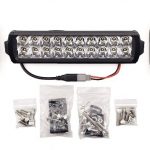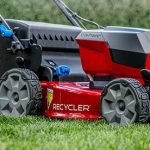For many regions of the country where water may be somewhat scarce, a Do-It-Yourself Drip Irrigation system may be just what the doctor ordered. In addition, such an irrigation system could mean more free time for you. It is easy to install and even easier to use.
A benefit to creating the system yourself is that residential irrigation systems can be costly. Some companies have been known to charge as much as $6,800. A DIY automated system can cost as low as $500.
The different components of the drip irrigation system, including the emitter and solid hose tubing, are available at your neighborhood hardware store. You have a choice of either generic black tubing or name brand copper tubing. You will need to also purchase connections to combine the tubing together. Make certain that the connections match the tubing you select to assure a proper fit. Some people who have created this type of drip irrigation system suggest that you test the connection with the tubing while you’re in the store to ensure that constructing the system at home will go smoothly.
Benefits Of A Drip Irrigation System
There are a number of reasons why a drip irrigation system may be your best alternative when it comes to watering your garden. For example, lawn sprinklers are not allowed in some locations of the country because they may cause an overabundance of water use during a time when a municipality is trying to conserve water. Drip irrigation systems are considered to be very water efficient. Very little water is lost to evaporation. Moreover, drip irrigation places the water at the base of the plant, not on the leaves. This limits possibilities of moisture-related problems for the leaves. In addition, the tubing is heavy duty and will last for a long time, but it is easy to work with using tools you probably have on hand.
Installing A DIY Drip Irrigation System
The project of constructing an irrigation system needs to start off with a plan. For example, you will need tools and other materials to perform the work. These include:

Uncoil the tubing lines along a smoother, dry surface to allow them to relax into a straighter line.
• Paper and pencil
• Measuring tape
• ½-inch diameter drip irrigation emitter tubing.
• ½-inch diameter solid hose irrigation tubing
• Irrigation tubing connection joints including T-connectors, elbow joints, and straight connectors.
• Threaded hose connector that fits into the end of a ½-inch hose tubing.
• Outdoor water tap or spigot
• Automated watering timer
• Metal connection collars
• Metal Landscape staples
• A cordless power drill
• Cutting tool
Next in your plan:
1. Sketch out a rough perimeter of your garden, the water spigot, and other features in the vicinity including fences and walkways.
2. Draw on to your rough sketch how you imagine the drip line will route through the garden. Make certain that the line runs by existing plants and in areas where you intend to plant more plants. Draw the drip emitter line that has holes in it where you have plants that need water. Draw the solid hose line to connect the drip emitter line from the garden to the water spigot.
3. Measure the garden area and include it in your drawing. Measure the desired drip line lengths as best you can. Loop the measuring tape around the garden leaving some space and include the measurement on your sketch.

Make certain that the connections are secure.3. Measure the garden area and include it into your drawing. Measure the desired drip line lengths as best as you can. Loop the measuring tape around the garden leaving some space and include the measurement on your sketch.
4. Calculate the total length of the emitter and solid line you will need in your desired configuration.
5. Once you have the drawing, study it to determine how many emitter lines come off of the solid line, determine what each connection will look like. Remember that each time you connect a line to a connector you will need a collar to hold the line onto the connection. So whenever you have three lines going in a T-shaped connector with three line going into it. If you can’t picture it, then buy a few each of T-connectors, elbow joints, and straight connectors.
Using your drawing and calculations, buy the supplies you need. It is advised that you keep the receipt so that if you end up with an extra T-connector or other items, the store from where you bought the supplies will take them back.
When performing the actual installation:
1. Uncoil the tubing lines along a smooth, dry surface like your lawn to allow the coiled line to settle and relax into a straighter line.
2. Set the watering timer to the desired watering time.
3. Attach the watering timer to the water outlet. Make sure the tap is set to off before, during and after attaching it.
4. Lay out the solid line from the water outlet to the garden.
5. Lay out the emitter line around or beside the garden. Envision how the line will weave through the garden, but keep the line in a large loop around or beside the garden for now. It will be put into its proper place when the connections are done.
6. Cut the emitter and solid lines to the desired lengths. Leave a little extra on each unless you are 100% sure of your measurements.
7. Place the metal connector collars around all the tubing ends.
8. Push the tubing connector into the cut ends of the hoses.
9. Slide the metal collars onto the portion of the tubing that is on the connector. Use the drill to secure the collars onto the tubing.
10. Install all remaining connectors.
11. Install the hose connector on the end of the solid line that will go into the water outlet.
12. Connect the hose connector to the watering timer.
13. Use the timer’s manual setting to “pressure test” the system. Turn on the irrigation system and walk the length of the line. Focus on the connections. If you notice one that is leaking, tighten the collar. If that doesn’t fix the connection, turn off the water and replace the connection.
14. Once the system is working as intended, set the line into the garden into its permanent location. Use the landscape staples to hold the line in place.








